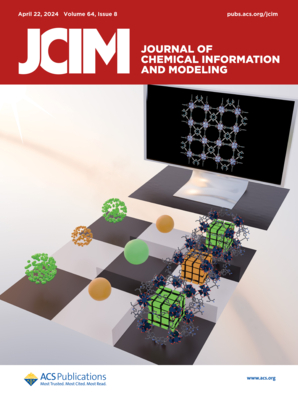阿米巴是碳水化合物分子动力学模拟的好力场吗?
IF 5.3
2区 化学
Q1 CHEMISTRY, MEDICINAL
引用次数: 0
摘要
多年来,分子动力学(MD)模拟被用于碳水化合物的研究,如CHARMM、AMBER/GLYCAM和GROMOS等力场。虽然这些力场已经取得了相当大的成功,并在我们对碳水化合物化学的理解中发挥了关键作用,但人们对结合极化效应来提高模拟精度的兴趣越来越大。从这个角度来看,我们考虑了非极化力场和极化力场的进展,以提取控制碳水化合物MD精度的关键因素。我们发现碳水化合物的极端亲水性和构象灵活性对大多数力场提出了挑战。总的来说,适合碳水化合物的力场需要包括与溶质参数集一致的水模型,短距离的软范德华斥力项和极化(无论是隐式还是显式)。我们发现AMOEBA改进了水化壳结构和动力学、氢键和扩散动力学的预测,尽管它在构象灵活性和糖苷键方面仍未得到很大程度的测试。尽管如此,阿米巴最近在单糖建模方面的成功,没有修改势能函数或水模型,为未来的研究提供了一个有希望的途径。这些进展将为这些生物和工业上相关的大分子的结构、动力学和相互作用提供更深入的见解。本文章由计算机程序翻译,如有差异,请以英文原文为准。
Is AMOEBA a Good Force Field for Molecular Dynamics Simulations of Carbohydrates?
Over the years, molecular dynamics (MD) simulations have been employed in the study of carbohydrates, with force fields such as CHARMM, AMBER/GLYCAM, and GROMOS. Although these force fields have achieved considerable success and played a pivotal role in our understanding of carbohydrate chemistry, growing interest has emerged in incorporating polarization effects to enhance the accuracy of simulations. In this perspective, we contemplate the advances that have been made in nonpolarizable and polarizable force fields to extract the key factors controlling accuracy in MD of carbohydrates. We find that the extreme hydrophilicity and conformational flexibility of carbohydrates pose challenges for most force fields. Overall, a force field suited for carbohydrates needs to include a water model developed consistently with the solute parameter sets, a soft van der Waals repulsion term at short distances, and polarization (whether implicit or explicit). We find that AMOEBA improves the prediction of hydration shell structure and dynamics, hydrogen bonding, and kinetics of diffusion, although it remains largely untested for conformational flexibility and glycosidic linkages. Nevertheless, AMOEBA's recent success in modeling monosaccharides without revisions of the potential energy functions or water model presents a promising avenue for future research. Such advances will provide deeper insights into the structure, dynamics, and interactions of these biologically and industrially relevant macromolecules.
求助全文
通过发布文献求助,成功后即可免费获取论文全文。
去求助
来源期刊
CiteScore
9.80
自引率
10.70%
发文量
529
审稿时长
1.4 months
期刊介绍:
The Journal of Chemical Information and Modeling publishes papers reporting new methodology and/or important applications in the fields of chemical informatics and molecular modeling. Specific topics include the representation and computer-based searching of chemical databases, molecular modeling, computer-aided molecular design of new materials, catalysts, or ligands, development of new computational methods or efficient algorithms for chemical software, and biopharmaceutical chemistry including analyses of biological activity and other issues related to drug discovery.
Astute chemists, computer scientists, and information specialists look to this monthly’s insightful research studies, programming innovations, and software reviews to keep current with advances in this integral, multidisciplinary field.
As a subscriber you’ll stay abreast of database search systems, use of graph theory in chemical problems, substructure search systems, pattern recognition and clustering, analysis of chemical and physical data, molecular modeling, graphics and natural language interfaces, bibliometric and citation analysis, and synthesis design and reactions databases.

 求助内容:
求助内容: 应助结果提醒方式:
应助结果提醒方式:


